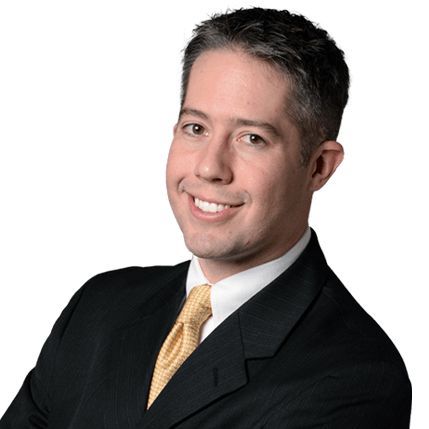Patent Applications: A Primer for Every Business
October 2, 2017
By: Patrick A. Quinlan
The Cutting Edge Magazine
Patents are powerful intellectual property rights, capable of stopping others from making, using, selling or importing an invention that is covered by the patent. Besides enforcement, patents can provide other value, including attracting investment, marketing a related product and generating revenue through licensing. Patents cover inventions such as new mechanical devices, manufacturing processes and ornamental product designs.
Patent applications at the US Patent and Trademark Office
The US Patent and Trademark Office (USPTO) is responsible for examining and issuing patents. There are many legal requirements for a patent application, set forth both by Congress and the USPTO. For example, an application must
describe an invention in enough detail to enable one of ordinary skill in the relevant art to practice the invention without undue experimentation. This is because when a patent expires (normally twenty years from the date of filing) the public will have a right to the invention, and must be provided with enough information to make and use the invention.
The invention must also be novel and non-obvious in view of the prior art. Examples of prior art include prior patents, patent applications, publications and products. In recent years, the requirement of subject-matter eligibility has become more of an issue. Essentially, if an invention is considered to be an abstract idea, then it will not be eligible for patent protection. This issue does not generally arise in the context of mechanical-based inventions, but is often raised by the USPTO if the invention is related to computer software or methods of doing business.
The basics of a patent application
There are three primary parts of a patent application: the written specification, the drawings and the claims. Patent drawings have specific requirements, which often need to be handled by a patent draftsman to ensure the detailed requirements are met. The specification is text-based, includes a written description of the invention and claims and may in some cases include the results of experiments involving the invention. Claims are the legal definition of the invention and must be supported by the written description and drawings. While inventors can help provide content for the written description and drawings, the claims are normally drafted by a patent attorney familiar with the content and format requirements for claims, though inventors do need to review and understand the claims before filing. It is the claims, primarily, that the USPTO will examine to determine if the application complies with the various legal requirements, such as subject-matter eligibility, novelty and non-obviousness. It is important to note that an applicant has a duty to provide the USPTO with any known prior art references that an examiner might consider important in assessing patentability. If the applicant is found to have purposely not complied with this requirement, any resulting patent could be declared unenforceable.
While a regular application has many formal requirements, it is also possible to file a provisional application for patent, which has far fewer requirements. For example, drawings do not have to be prepared by a draftsman and a formal claim set is not required. A provisional application is only temporary as it will not be examined and cannot by itself result in a patent. A regular application must be filed within one year of filing the provisional application if protection is to be pursued based on the filing date of the provisional. There are certain advantages to filing a provisional application, such as getting an application on file quickly if a public disclosure of the invention (an event that can limit patent rights) is imminent. The regular application claims the benefit of the provisional application’s filing date, but only for matter that is sufficiently described in the provisional. Therefore, while a provisional application has fewer requirements, it is generally preferred if time allows to prepare a provisional application to be in a condition as close as possible to a regular application.
Understanding the patent application process
The regular application process begins with preparing and filing an application for a patent with the USPTO. Once filed, there may be a substantial period of pendency as the application sits in the backlog of applications for review. Such initial pendency can range from one to three years. With the payment of a significant additional fee to the USPTO, an application can be moved to the front of the queue and will typically be examined within a few months.
Once examined, it is not uncommon for the USPTO to initially reject an application based on one or more grounds (e.g., lack of novelty or obviousness in view of multiple prior art references), but an applicant can respond to such rejections by, for example, amending the scope of the claims (the definition of the invention) or by submitting argument in support of patentability. If amending the claims, the amendments must be supported by the written description, so it is best when initially preparing the application to include as much detail as practical regarding the invention so that such amendments will be accepted by the examiner. Rejections can often be resolved by working with the patent examiner. However, if the rejections cannot be resolved, then an appeal can be filed with the USPTO. If not satisfied with the result, the applicant can appeal further to the Court of Appeals for the Federal Circuit and possibly the Supreme Court, though such appeals are rare.
If at least one of the claims is deemed allowable, then the application can proceed to issuance with the allowed claims, following payment of an issue fee to the USPTO. Before the application issues as a patent, however, the applicant has the option of filing a divisional, continuation or continuation-in-part application. Such applications are separate applications that claim priority to the original application’s filing date. They can include a different set of claims to pursue broader or different coverage, but include the same written description and drawings. The exception is a continuation-in-part application, which can include new information, but any claims directed to the new information will not have priority to the original filing date. Continuing applications are useful for keeping patent coverage options open. For example, if a competitor designs a product that is similar to the invention but not covered by the claims of the original application, it may be possible to include claims in a continuation that will cover the competitor’s product. It is important that the continuation is filed before the original application issues as a patent or it will not be able to claim priority to the original filing date.
Gaining international protection
Patent rights are territorial. A US patent provides protection within the US, but not in other countries. A patent must be obtained in each country for which protection is desired. Fortunately there is a mechanism for making the foreign patent application process easier. A Patent Cooperation Treaty (PCT) application can provide a starting point for pursuing foreign protection. A PCT application must be filed within one year of a US application (regular or provisional). While a PCT application is an international application, it does not result an international patent. Applications in select individual countries (or some regions) must be pursued separately from the PCT application. Within 30 months from filing a PCT application (or from the earliest priority date), an applicant must proceed with the applications in individual countries. This is called the “national phase” of the PCT application and can be very expensive as filing fees must be paid in each country and foreign attorneys must be retained.
Pursuing foreign protection by way of a PCT application can help postpone the large expense of national phase applications. For example, say an inventor conceives of an invention, but does not have an immediate market for the invention. The inventor can have prepared and filed a US provisional application that describes the invention in detail. The inventor then has one year to test the viability of the invention as a marketable product or service. If the invention appears promising in the US market, for example, the inventor can, within that year, proceed with filing a regular patent application in the US and a PCT application to pursue foreign protection. The inventor will then have 18 months to test the viability of the invention in foreign markets, if not already known. The inventor will need to decide the countries in which to pursue patent protection by 18 months after the PCT is filed (30 months from the filing of the provisional). In this way, the inventor can hold off on incurring the large expense of foreign filings for two-and-a-half years after starting the patent application process in the US. This is, of course, an example scenario and other options exist, such as filing only a PCT application after the US provisional, and pursuing protection in the US as part of the PCT national phase.
While patents are one of the most powerful types of intellectual property, they are also more complicated and more difficult to obtain. A successful patent protection strategy, however, is often essential to provide a foundation for a thriving business focused around a promising invention.
This article is reproduced with permission from the International Association of Diecutting and Diemaking's monthly magazine, The Cutting Edge, October 2017.
The IADD is an international trade association serving diecutters, diemakers and industry suppliers worldwide. IADD provides conferences, educational and training programs, a monthly magazine, online resource library of 600+ technical articles, industry experts to answer technical questions, publications and training manuals, recommended specifications, online used equipment marketplace, videos and more. IADD also co-presents Odyssey, a bi-annual trade show and innovative concept in technical training featuring a hands-on Techshop where training programs come alive in an actual working diemaking and diecutting facility inside the exhibit area. Visit www.iadd.org or call 1-815-455-7519 for more information.




